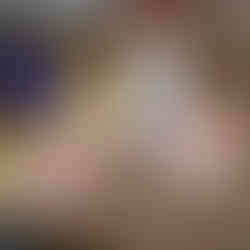3D CUTTING BOARD
- three16ths
- Dec 27, 2019
- 3 min read
Updated: Jan 10, 2021
I’ve always marveled at the patterns that you can make in some of the fancier cutting boards. I finally decided it was time for me to tackle one of them.

I found a you tube video of the guy that made this. After carefully watching the video, I spent hours trying to figure out how to make a smaller version for my daughter. I had a hard time figuring out how to cut all the pieces without wasting any of the fancy hardwoods that I planned to use. I made my cutting board 13 ¼” x 13 ¼” plus the border around it. I used ¾” thick boards. For mine I cut the ¾” boards 18” long. I used 4 ¼” wide of the Purpleheart and Padauk. It took 9” wide of the Oak.
I used a bandsaw for all my cuts, so that I wouldn’t waste so much wood with all the cutting that is necessary.

Use THIS picture of the cutting board, from the you tube video, for making your pattern. The pictures of the cutting board that I made, have an incorrect pattern.

The first step is to rip the 18” planks into 9 different widths. There is one 18” length for each width. You will end up with 9 strips of the Purpleheart, 9 strips of the Padauk, and 18 strips of the Oak. The Oak has twice as many pieces in the pattern. The 9 widths are: 4 mm, 5 mm, 6mm, 8mm, 10mm, 12mm, 14mm, 16mm, 19mm.

After these are all done, then cut the 18” lengths into 4 equal pieces, so you will end up with approximately 4 ½” long strips.

Lay out the strips into 9 rows of different thicknesses, and start stacking the strips in four different patterns.
See the pictures of the four patterns.




When you get done stacking the four groups, you will end up with one set of 4mm, and two sets of 9mm left over. These are extras that are not needed.

Glue these four stacks up now. Use Titebond III glue, for two reasons. One reason is that you want to use waterproof glue, since a cutting board will be getting wet. The other reason is that the waterproof glue has a longer setup time. You need a longer setup time because it takes a while to glue up and clamp all 33 pieces.
After the glue has set up at least 24 hours, rip each strip into the lengths that you see in the you tube picture. For example, the stack with the Oak-Purpleheart-Oak-Padauk at both ends of the stack, will be cut at: 6, 14, 14, 6, 6, 14, 14, 6 mm.
As you’re ripping these on the bandsaw, keep an eye on the edge. Occasionally you need to straighten up the edge when ripping on a bandsaw.

Now that you have all the strips cut, it’s time to glue them up. I caution you not to try to glue all of these up at once. If you try it, I guarantee you’ll regret it. Just glue 5-7 short groups individually. Then glue those together one pair at a time.

After the square is completed, you will have to run it through a saw to even up the edges and square it up. Unfortunately you will end up shaving some of the 4 millimeter edge pieces down a little. Most people looking at the finished board won’t noticed it. They will be focused on looking at the unique pattern. Adding a border around the board will help strengthen it, as well at dress it up a bit.

I ended up using my router sled to level it all up. You may not have to do this step.

After sanding the completed cutting board down to 400 grit, I gave it several coats of butcher block oil. The hardest part now is convincing my daughter that it really is okay to cut on this cutting board.



















Comments